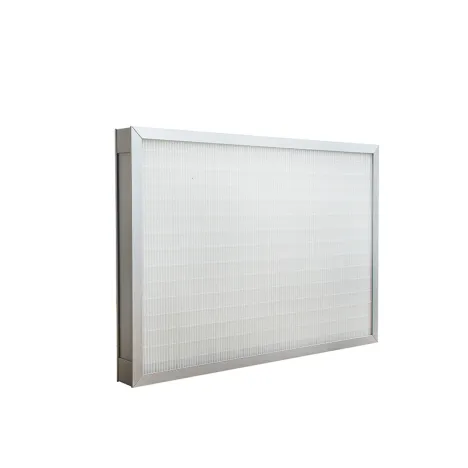In our quest for a healthier and more comfortable home environment, one often overlooked yet crucial aspect is the air we breathe. We often underestimate the impact of indoor air quality on our overall well-being. That's where blower filters come into play, offering an efficient solution to ensure the air in your home is clean and safe to breathe. In this comprehensive guide, we will walk you through everything you need to know about blower filters, from their types to installation and maintenance, helping you create a healthier home for you and your loved ones.

Before delving into the world of blower filters, let's take a moment to understand why clean air is essential for your health and well-being. The air we breathe indoors can be filled with pollutants, allergens, dust, and even microscopic particles that can harm our respiratory system and overall health. Poor indoor air quality has been linked to various health issues, including allergies, asthma, and respiratory infections.
When it comes to blower filters, not all are created equal. There are several types available on the market, each designed to cater to specific needs and preferences. Here are some of the most common types:
Fiberglass filters are the most basic and affordable option. They are typically disposable and designed to capture larger particles like dust and debris. While they offer minimal filtration, they are better than no filter at all.
Pleated filters provide better filtration efficiency compared to fiberglass filters. Their pleated design increases the surface area for trapping particles, making them more effective at capturing dust, pollen, and pet dander.
High Efficiency Particulate Air (HEPA) filters are the gold standard in air filtration. They can capture 99.97% of particles as small as 0.3 microns, including bacteria and viruses. HEPA filters are ideal for those with allergies or respiratory conditions.
Activated carbon filters excel at removing odors, chemicals, and gases from the air. They are often used in combination with other filters for comprehensive air purification.
UV-C filters use ultraviolet (UV) light to kill germs, bacteria, and viruses. They are a valuable addition to air filtration systems, especially in healthcare settings.
Proper installation is key to ensuring your blower filter works effectively. Here's a step-by-step guide on how to install a blower filter in your HVAC system:
Before you begin, turn off your heating or cooling system to ensure your safety.
Find the filter slot in your HVAC system. It is typically located near the blower or air handler unit.
If there's an existing filter, carefully remove it and dispose of it properly.
Slide the new blower filter into the slot, ensuring it fits snugly and follows the airflow direction indicated on the filter.
Securely close the filter slot, making sure there are no gaps or loose edges.
Finally, turn your heating or cooling system back on, and you're all set to enjoy cleaner, fresher air in your home.
In conclusion, the quality of the air you breathe at home has a significant impact on your health and well-being. Investing in a high-quality blower filter is a proactive step toward creating a healthier indoor environment for you and your family. With various filter types to choose from and proper installation and maintenance, you can breathe easy and enjoy a healthier home.
271
0
0
All Comments (0)
If you are interested in sending in a Guest Blogger Submission,welcome to write for us!
Comments